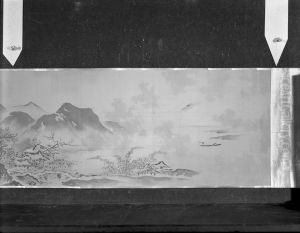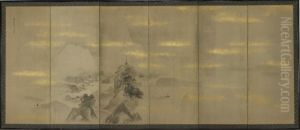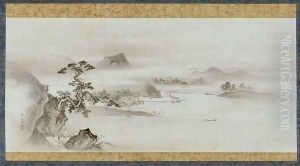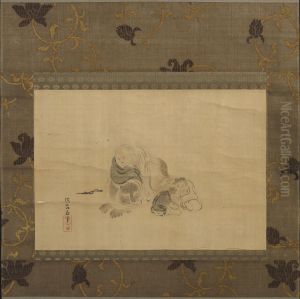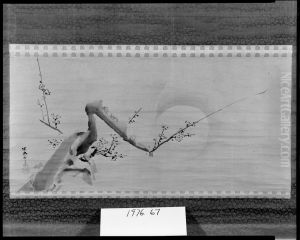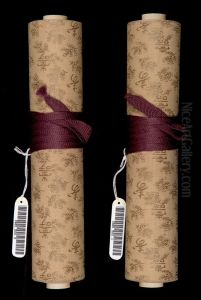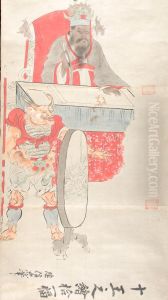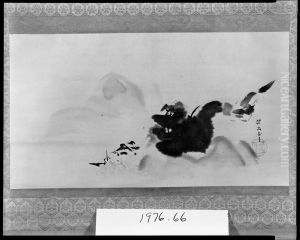Kano Tan'yu Paintings
Kano Tan'yu was one of the foremost Japanese painters of the Kano school, which had a profound influence on the development of Japanese painting during the Edo period. Born in 1602 in Kyoto, Japan, Tan'yu was the eldest son of Kano Takanobu and the grandson of Kano Eitoku, who were both significant figures in the Kano school. The school was known for its blending of Chinese painting techniques with Japanese aesthetics, and it was the dominant style of painting for several hundred years, especially favored by the shogunate and ruling classes.
Tan'yu showed artistic promise from a young age and was appointed by the shogun Tokugawa Ieyasu as one of the official painters for the Tokugawa government. This was a prestigious position that allowed him significant creative freedom and resources. Throughout his career, he was involved in numerous large-scale projects, including the decoration of castles and temples with grandiose screen paintings and wall panels. His works often depicted scenes from nature, historical events, and classical literature, infused with a sense of elegance and grandeur.
Tan'yu was instrumental in establishing the Kano school as the preeminent style of the time by codifying its techniques and training the next generation of painters. He moved the school's headquarters to Edo (now Tokyo) to be closer to the shogunate and became an influential teacher and leader. His works were characterized by their bold brushwork, use of color, and incorporation of Zen Buddhist themes, which resonated with the samurai class's philosophical leanings.
Despite the political turmoil of the period, Tan'yu's reputation and the Kano school's dominance remained largely unchallenged. He received numerous honors and titles for his contributions to the arts, including the court rank of Hogen, which was a significant recognition of his talent and impact. Tan'yu's legacy extends beyond his paintings, as he left behind a substantial body of writings on artistic theory and practice, which have been valuable resources for understanding the aesthetics and techniques of the Kano school and Edo-period painting.
Kano Tan'yu passed away in 1674, but his influence on Japanese art persisted long after his death. He is remembered not only as a master painter but also as a cultural icon who helped shape the visual language of Japan during a transformative era in the country's history.
